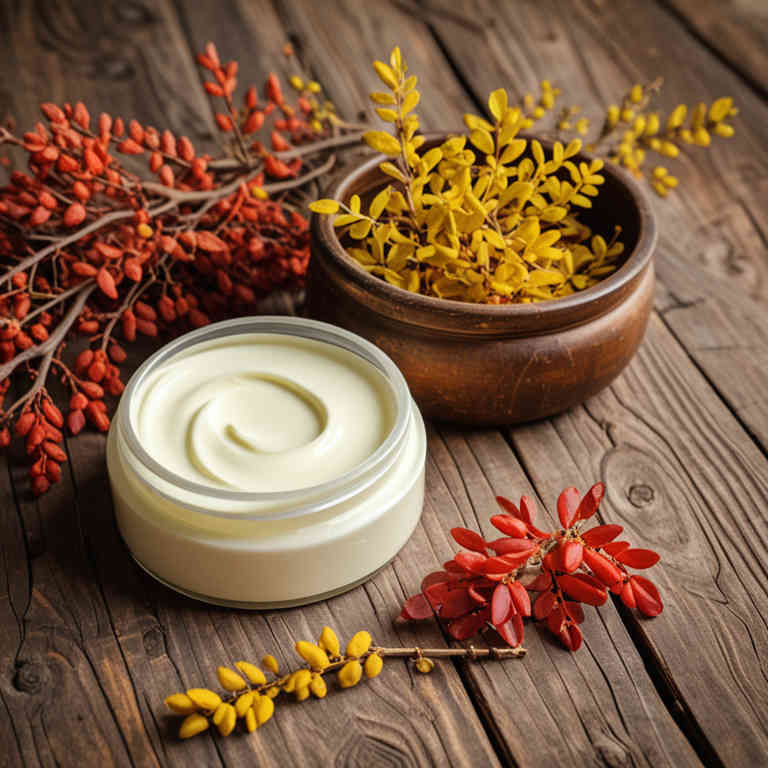Berberis vulgaris cream for medicinal use

Berberis vulgaris cream is a topical herbal preparation made from the dried roots of the barberry plant, which contains the active compound berberine.
This cream is traditionally used in herbalism to treat skin conditions such as eczema, fungal infections, and inflammation due to its antimicrobial and anti-inflammatory properties. It is often applied directly to the affected area to soothe irritation and promote healing. The preparation may also help in reducing symptoms of psoriasis and other inflammatory skin disorders.
However, it should be used with caution, as some individuals may experience skin irritation or allergic reactions.
Uses
Berberis vulgaris cream has been used to treat various skin conditions and infections due to its antimicrobial and anti-inflammatory properties.
Historically, it was employed in traditional medicine systems such as Ayurveda and Chinese herbalism to address ailments like eczema, psoriasis, and fungal infections. The active compound, berberine, has been recognized for its ability to combat bacteria and fungi, making it a valuable ingredient in natural remedies. In modern times, it is incorporated into topical creams to manage dermatological issues and support wound healing.
Its continued use highlights the enduring relevance of traditional herbal knowledge in contemporary healthcare.
Benefits
Berberis vulgaris cream has health benefits such as reducing inflammation, supporting skin healing, and providing antimicrobial protection.
It is often used topically to treat wounds, eczema, and fungal infections due to its active compound, berberine. The cream may also help in managing conditions like psoriasis and dermatitis by soothing irritated skin. Its anti-inflammatory properties can alleviate symptoms of various skin disorders.
Additionally, it is believed to have a positive effect on overall skin health by promoting cell regeneration and reducing redness.
Constituents
Berberis vulgaris cream active constituents include berberine, protoberberine alkaloids, and other phytochemicals such as chelidonic acid and berberine.
These compounds possess antimicrobial, anti-inflammatory, and antifungal properties that contribute to its therapeutic effects. Berberine, the primary active alkaloid, is known for its ability to support gut health and enhance metabolic function. The cream is commonly used topically to treat skin infections, eczema, and other inflammatory conditions.
Its natural origin makes it a popular choice for those seeking alternative or complementary health solutions.
Preparation
To make Berberis vulgaris cream, start by collecting fresh or dried Berberis vulgaris (barberry) leaves and stems.
Wash and chop the plant material, then gently heat it in a mixture of water and a mild vinegar solution to extract the active compounds. Strain the liquid to remove solid particles, and then combine it with a base of coconut oil or another suitable vegetable oil.
Finally, blend the mixture until smooth and store it in a cool, dark place for optimal potency.
Side Effects
Berberis vulgaris cream may lead to gastrointestinal upset, including nausea, vomiting, and diarrhea, due to the presence of berberine, which can irritate the digestive tract.
It may also cause skin irritation or allergic reactions in some individuals, especially those with sensitive skin. Prolonged use could result in liver toxicity, as berberine has been associated with elevated liver enzymes in certain cases. It is not recommended for pregnant or breastfeeding women due to potential risks to the fetus or infant.
Individuals with diabetes should use caution, as berberine may lower blood sugar levels, requiring adjustments to their medication.